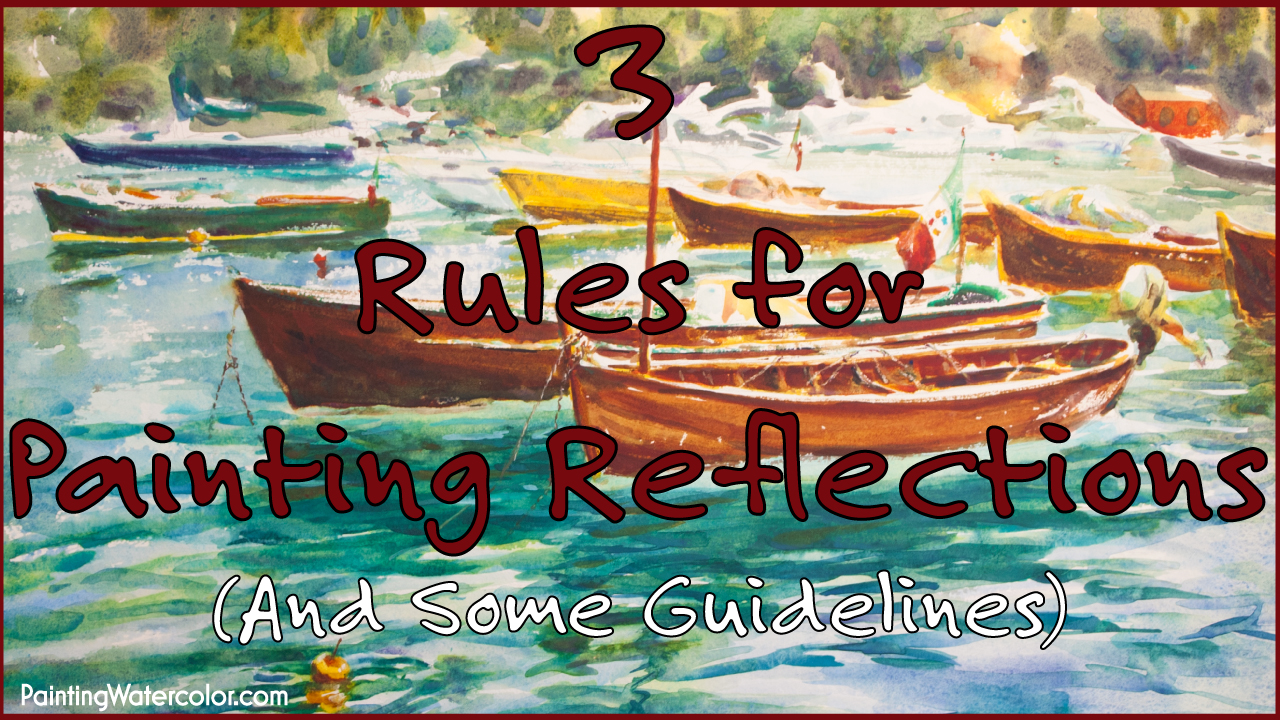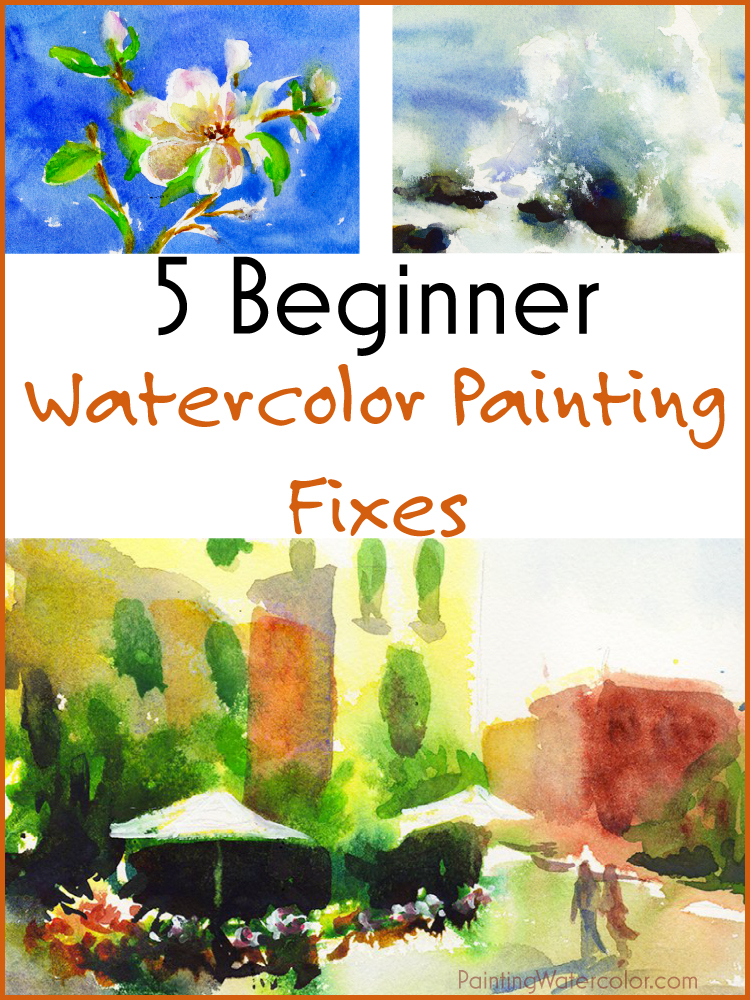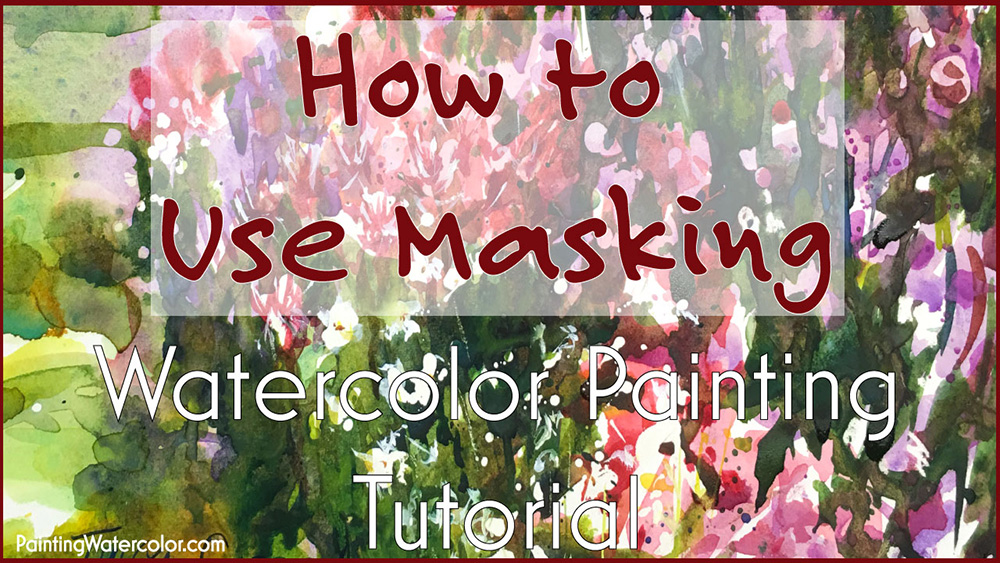When I look at a gorgeous lake scene, I don't think about Physics 101, but all the rules of painting reflections are basic physics. Think of the lake as a mirror. That's all it is before we start adding ripples. A dull, imperfect mirror, but still a simple mirror.
1. Reflections come directly toward the viewer.
Reflections don't skew with the sun like shadows. They always come directly towards you, the artist painting those reflections and the viewer looking at your paintings.

On a panorama where I rotated to get over 180 degrees (check out the railing on either side for the total angle), you can really see the full effect. No matter which way you turn your head, reflections come toward you.
If it helps, use a ruler to draw a 90 degree line from the bottom edge of the paper. That's really all you need to do.
On really large paintings, such as murals, this gets complicated since you have to plan for where the viewer (or the most viewers) are going to be standing. But as long as you stay under 12 feet wide, you're pretty safe just making all the reflections come towards you at the center of the painting.
Disclaimer: Jennifer Branch Gallery is a participant in the Amazon Services LLC Associates Program, an affiliate advertising program designed to provide a means for sites to earn advertising fees by advertising and linking to amazon.com. I receive a small rebate for your entire order (starting at 4%) if you choose to purchase through Amazon. Most items can be bought multiple places and I highly recommend local art stores if you have one! Any other recommendation links I receive no compensation for.
These referrals help me support this website, and I thank you for any purchase you make through them. I will never recommend a product I have not used frequently and believe is the best tool for the purpose!
2. Angle of Viewer determines Length of Reflection
Back to Physics 101!
Water is a dulled mirror, but still water is a reflecting mirror. How long a reflection is is determined by the angle your eyes receive that light ray at. Remember, light bounces off a surface at equal angles. So whether you are closer or farther, lower or higher than the reflected object tells you the length of the reflection.
So both the angle the object is reflected at and the length of the reflection are determined by YOUR position relative to the object.
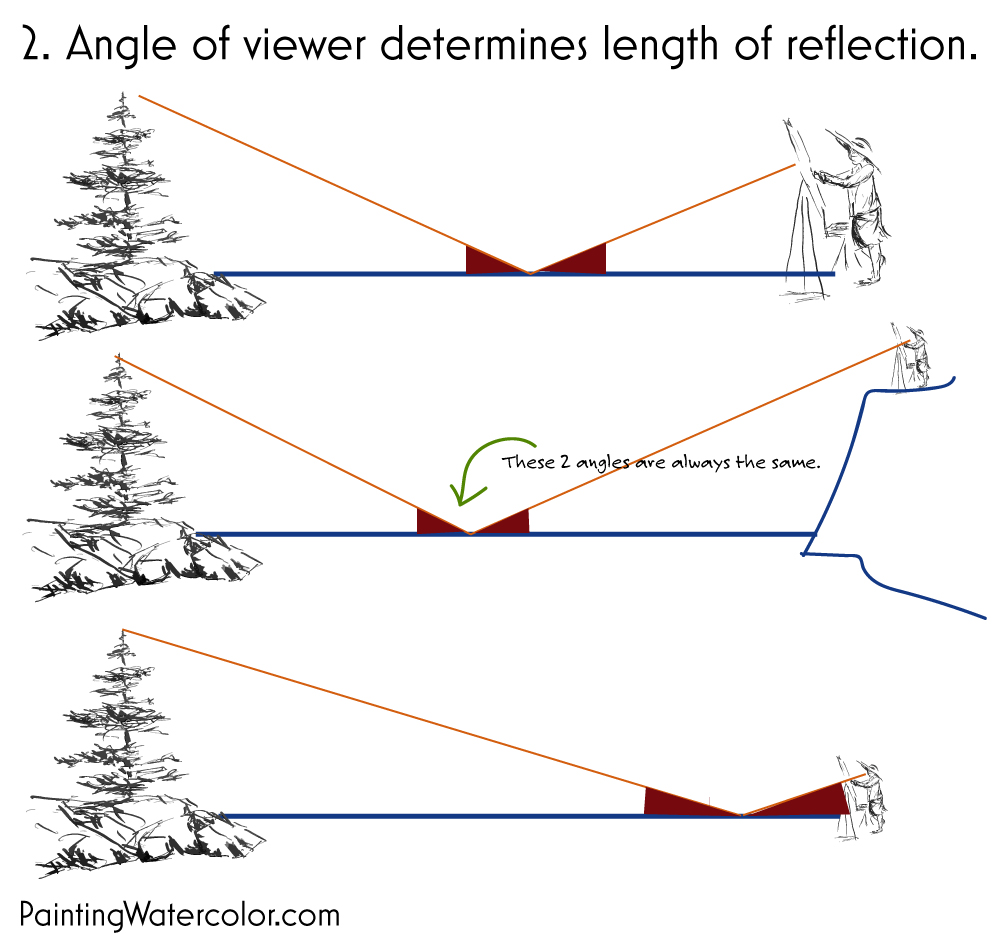
So if you take a photo standing up, then sit down to sketch, your angle to the object and the water will change. This becomes a problem if you then go home and finish your painting using your photo, you're going to have some problems!
If you always remember the length of the reflection you see is determined by where you are standing relative to the object, it becomes simple.
3. Colors are Less Saturated
Whites are Dulled.
So think of water as a cloudy mirror. Any lights or colors reflected will be duller, even on the crispest summer day where you can see the water forever.
When we look at the scene, we think how that gorgeous reflection just glows, so we paint it very bright. The colors on the water are so bright, after all. We need to saturate the reflection like crazy!
And it just looks weird.

This lovely photo of Venice definitely needs to be on my To Paint list.
Notice how the reflected images are much duller than the actual objects.
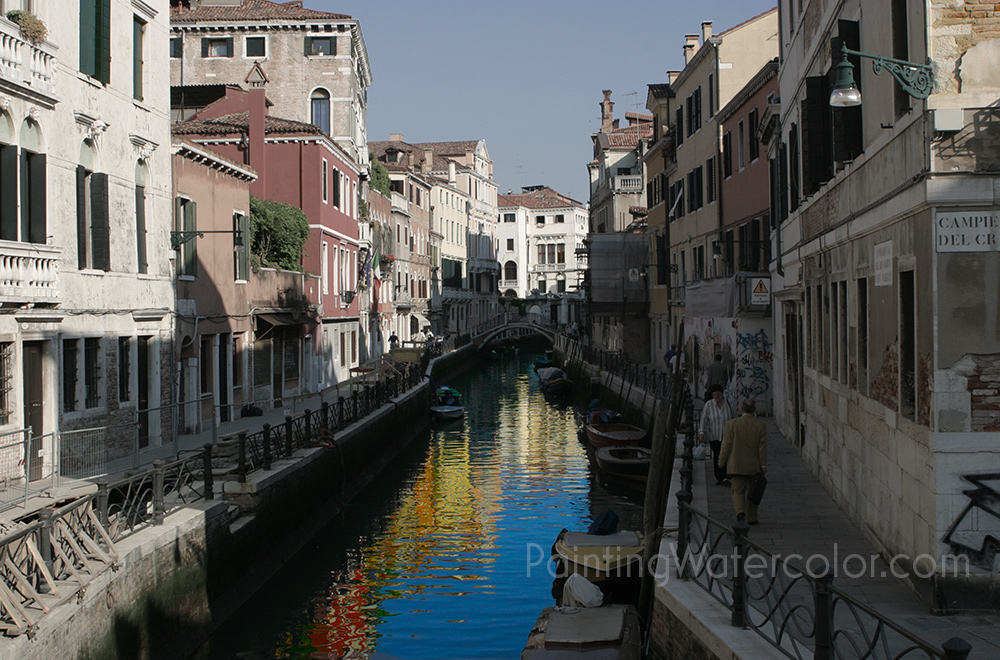
A really bad Photoshop effect I'm sure you've seen with bad photographs.
It really doesn't work when the reflections are brighter than the objects.

Another on my To Paint list!
Notice how all the reflected whites are dulled, even though the impression is of bright reflections.
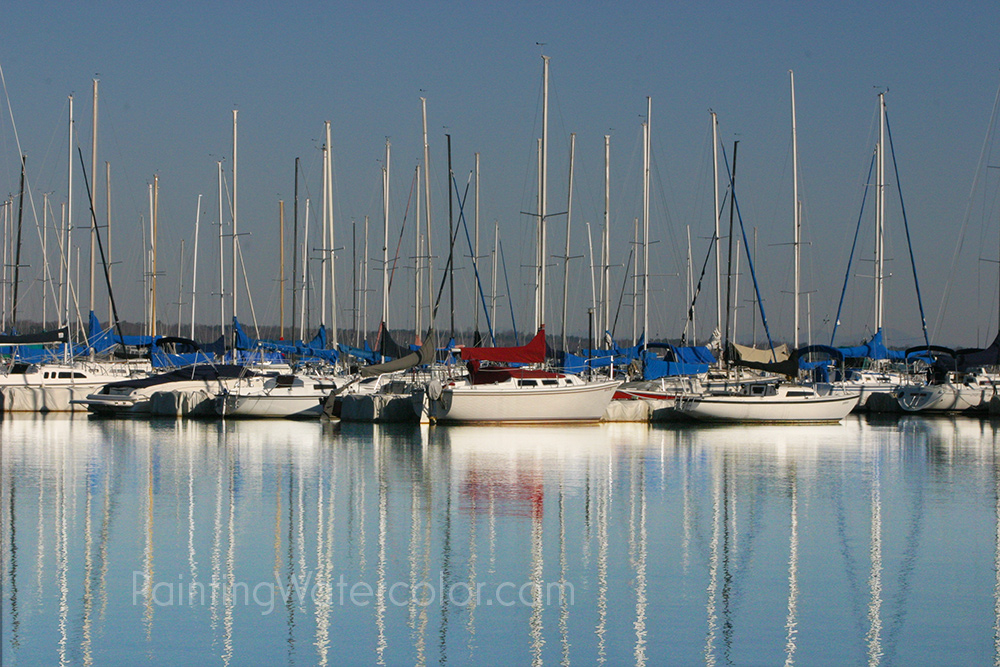
Ok, this bad Photoshop is very disturbing because we know it's wrong.
So don't have your paintings look physically impossible!
No matter how bright a water image appears, really watch yourself before you paint it as bright as it seems in your head. I'm not saying a reflection couldn't be brighter than the object. I am saying I haven't seen it when I really examined what I was looking at.
So be very careful to paint the values and saturation you actually see. Otherwise it will just look unnatural.
Usually lights are darker and darks are lighter.
Usually true is really most of the time. But every so often light reflects at a weird angle or you're painting a night scene and the rule just doesn't apply.
I see this rule broken the most in low light situations. Color saturation is always dulled but sometimes light can be odd and we see a darker reflection on the water or a lighter area than the actual object.
Don't trust a photo if your're breaking this rule. Photos can be deceptive, especially when you're dealing with processed data which is everythng but RAW. So if you see a reflection that's lighter than the object reflected and you know you have to paint that effect, always make notes on a quick sketch or paint on location.
Usually water has more horizontal lines closer together with distance.
So horizontal lines always do happen on the distant horizon, however sometimes there is enough wind or tides where it just never looks like that happens without a telescope. So this rule is definitely more for painters than scientists. We're painting what we see there versus what we know should be there.
Over the next few weeks, we'll explore 3 variations of painting water reflections.
I hope you're as excited about this series as I am! Thinking about these simple reflections rules has always transformed my students' paintings immediately. I'm excited to share them with everyone!
I think some of the biggest stumbling blocks to painting paintings you're really happy with are simple technical ones. These blocks get in our way because we're simply in the habit of painting inaccurately.
Painting reflections correctly is as easy a mental shift as realizing all skies aren't blue and all trees aren't lollipops with green leaves with brown trunks. These habits are ingrained in kindergarten and useful there. Later on, they're so frustrating because we can't paint what we see accurately.
Watercolor painting is difficult. It's one of those things that's easy when you don't know how and becomes more complicated the more you learn. That's a lot of the fun of watercolor!
However, most of the technical parts of watercolor are very simple, like painting reflections. And whether you want to become a master artist or simply capture your vacations in a sketchbook, you can gradually develop those skills.
It's so much better if we save our painting energy for capturing that light perfectly or showing those evanescent ripples on the boat hull than worrying about which direction the boat reflection goes in. Accurate reflections are easy!
Homework!
Start sketching reflections!
The very best idea is to sketch a lake view (smooth mirror is easier) at different times of day from the same location. This way you can see how light changes colors and values, but not the shape of the reflection.
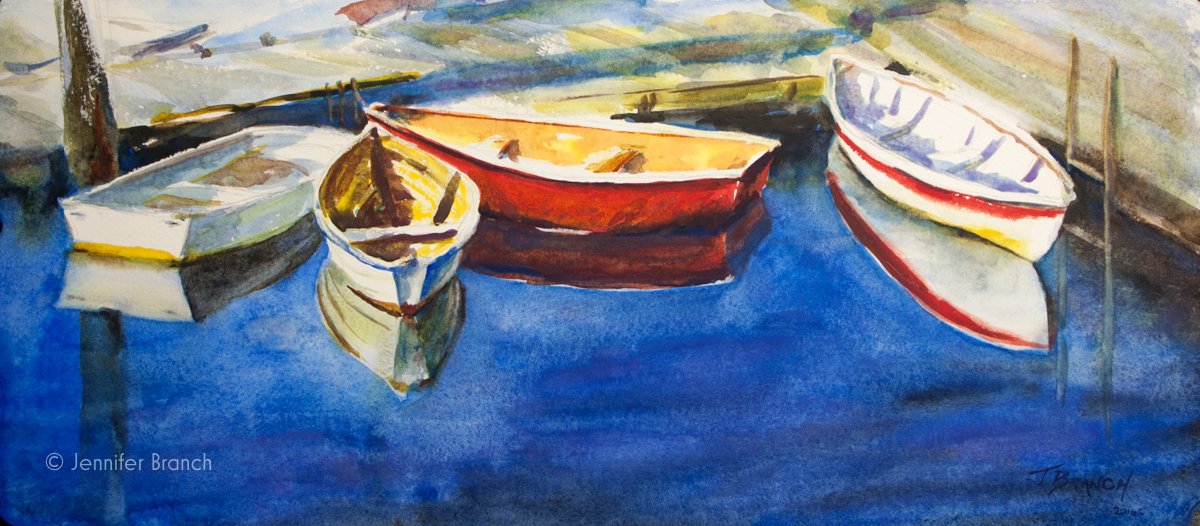
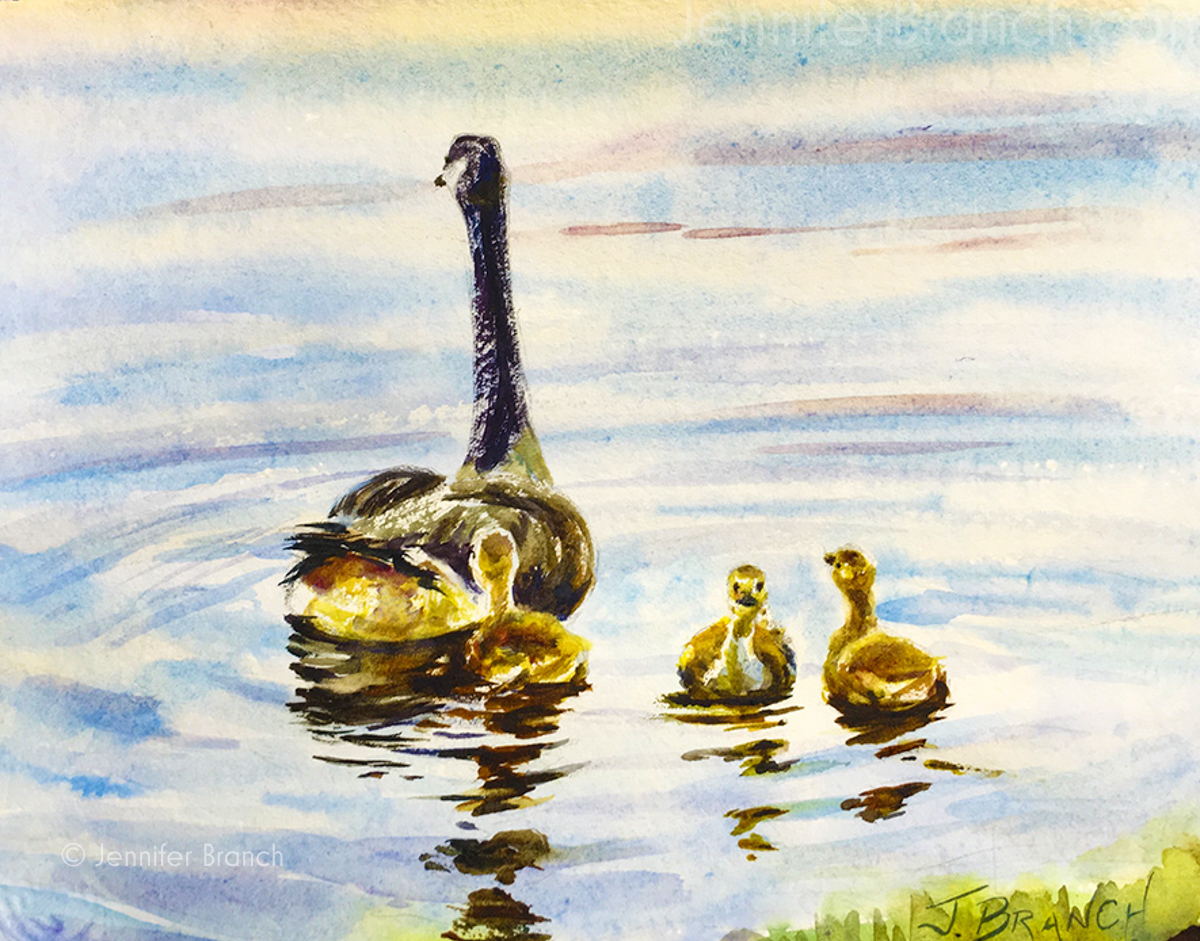
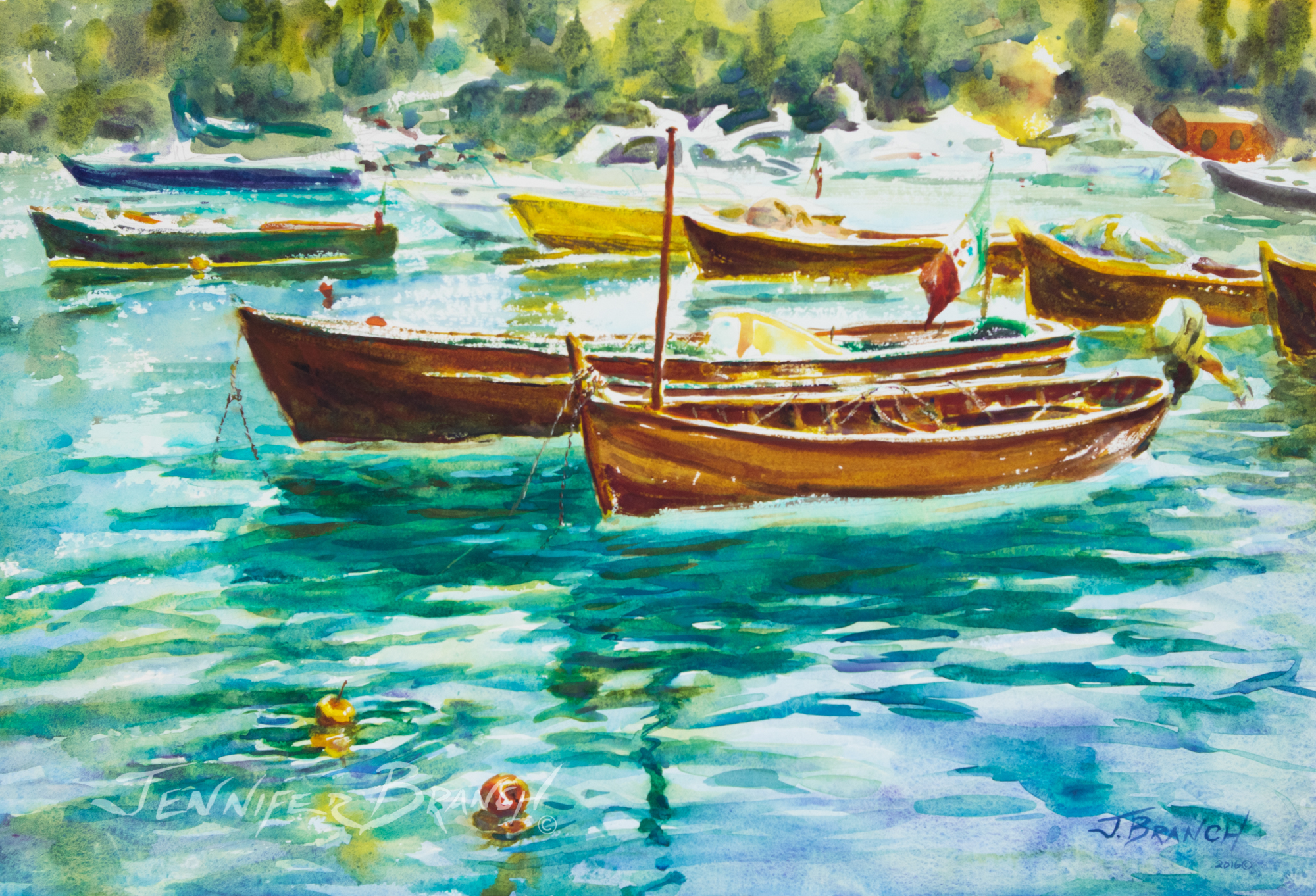 Portofino Boats, the final painting tutorial in the Reflections series.
Portofino Boats, the final painting tutorial in the Reflections series.


